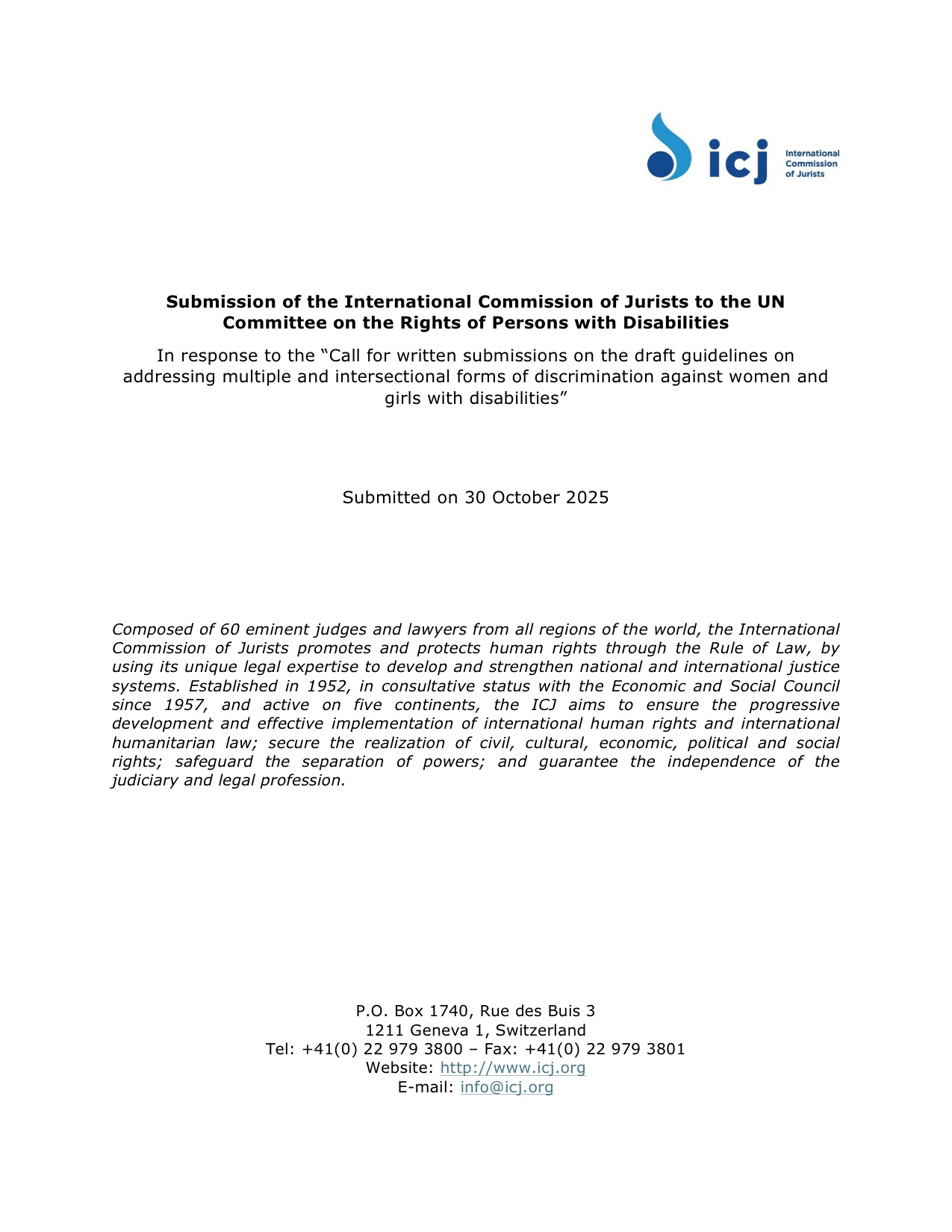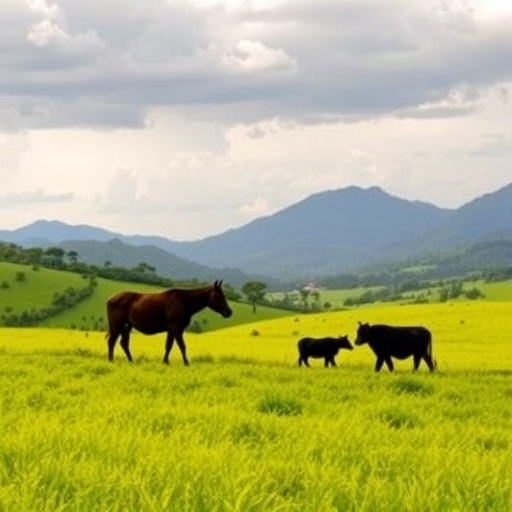China’s $167 billion hydroelectric dam raises alarm with India – Straight Arrow News

Report on the Yarlung Tsangpo River Hydroelectric Project and its Alignment with Sustainable Development Goals
Project Overview and Contribution to Clean Energy (SDG 7)
China has initiated a $167 billion hydroelectric dam project on the Yarlung Tsangpo river in Tibet. This initiative is positioned to become the world’s largest renewable energy project, directly addressing Sustainable Development Goal 7 (Affordable and Clean Energy). The project’s key details include:
- Energy Capacity: State engineers project a potential generation of 70 gigawatts of electricity.
- Construction Plan: The project involves a series of five cascade dams located around the city of Nyingchi. The plan includes straightening sections of the river and diverting water through engineered tunnels.
- Timeline: The anticipated completion date for the mega-dam is 2033.
Economic Implications and Industrial Growth (SDG 8 & 9)
The construction effort is projected to deliver a substantial economic stimulus, aligning with Sustainable Development Goal 8 (Decent Work and Economic Growth) and Sustainable Development Goal 9 (Industry, Innovation, and Infrastructure). Analysts estimate the project could increase China’s economic growth by nearly 0.1 percentage point, equivalent to approximately $17.8 billion, within its first year of construction. Key industrial sectors set to benefit include:
- Construction
- Cement
- Steel
The announcement prompted a significant positive reaction in financial markets, with corporations like the Power Construction Corporation of China and the China Energy Engineering Corporation experiencing substantial surges in their stock values.
Climate Action and National Emission Targets (SDG 13)
The mega-dam is a critical component of China’s long-term environmental strategy. By providing a vast new source of renewable energy, the project directly supports the objectives of Sustainable Development Goal 13 (Climate Action). The clean power generated will be instrumental in helping the nation progress toward its stated goal of achieving carbon neutrality by 2060.
Geopolitical and Transboundary Water Concerns (SDG 6 & 16)
The project presents significant challenges to regional stability and international cooperation, impacting Sustainable Development Goal 16 (Peace, Justice, and Strong Institutions). The Yarlung Tsangpo river flows downstream into India and Bangladesh, where it is known as the Brahmaputra. Concerns from these neighboring countries threaten to escalate geopolitical tensions.
The management of the river’s water flow has direct implications for Sustainable Development Goal 6 (Clean Water and Sanitation) for downstream populations. Indian officials have voiced fears that the dam’s operation could lead to either droughts or severe flooding, with one regional leader warning that the dam could be utilized as a “water bomb,” posing a devastating risk to life, land, and property in the entire Siang river belt.
Environmental and Ecological Risks (SDG 15 & 11)
Serious environmental risks have been identified, which conflict with the principles of several Sustainable Development Goals.
- SDG 15 (Life on Land): The dam is being constructed within the Yarlung Tsangpo gorge, a national nature reserve recognized as one of China’s most important biodiversity hotspots. The area is home to more than 4,500 distinct plant species whose habitats are threatened by the construction.
- SDG 11 (Sustainable Cities and Communities): The project carries significant seismic risks. It is located between two tectonic plates and near the epicenter of the strongest land-based earthquake ever recorded (1950), raising concerns about the structural integrity and safety of the dam.
- Coastal and Delta Impact: The dam is expected to disrupt the natural flow of sediment down the river. This could accelerate coastal erosion and make the river’s vast delta region more susceptible to the effects of sea-level rise.
Despite these concerns, the project is moving forward, with the Chinese government prioritizing its economic and energy benefits. Beijing has provided assurances that it will implement measures to ensure safety and environmental protection, claiming that downstream areas will not be adversely affected.
Analysis of Sustainable Development Goals (SDGs) in the Article
1. Which SDGs are addressed or connected to the issues highlighted in the article?
- SDG 6: Clean Water and Sanitation
- SDG 7: Affordable and Clean Energy
- SDG 8: Decent Work and Economic Growth
- SDG 9: Industry, Innovation, and Infrastructure
- SDG 13: Climate Action
- SDG 15: Life on Land
- SDG 16: Peace, Justice, and Strong Institutions
2. What specific targets under those SDGs can be identified based on the article’s content?
-
SDG 7: Affordable and Clean Energy
- Target 7.2: By 2030, increase substantially the share of renewable energy in the global energy mix. The article states the project is a “mega-dam” that “could become the world’s largest renewable energy project” with the potential to generate “70 gigawatts of electricity,” directly contributing to increasing the share of renewable energy.
- Target 7.a: By 2030, enhance international cooperation to facilitate access to clean energy research and technology… and promote investment in energy infrastructure and clean energy technology. The article details a “$167 billion hydroelectric dam project,” which represents a massive investment in clean energy infrastructure.
-
SDG 8: Decent Work and Economic Growth
- Target 8.1: Sustain per capita economic growth in accordance with national circumstances. The article mentions that the project “promises to deliver an economic jolt to key industries” and could “boost China’s economic growth by almost 0.1 percentage point — roughly $17.8 billion — in its first year of construction.”
-
SDG 9: Industry, Innovation, and Infrastructure
- Target 9.1: Develop quality, reliable, sustainable and resilient infrastructure… to support economic development and human well-being. The mega-dam is a significant infrastructure project designed to provide a massive new source of energy and stimulate economic activity in the “construction, cement and steel sectors.”
-
SDG 13: Climate Action
- Target 13.2: Integrate climate change measures into national policies, strategies and planning. The project aligns with “China’s clean energy objectives” and its national goal of “reducing emissions in the electricity production sector” to achieve “net-zero emissions by 2060.”
-
SDG 15: Life on Land
- Target 15.1: By 2020, ensure the conservation, restoration and sustainable use of terrestrial and inland freshwater ecosystems and their services. The article highlights the project’s threat to this target, as it is being built in the Yarlung Tsangpo gorge, which is “home to a national nature reserve” and a “biodiversity hotspot.”
- Target 15.5: Take urgent and significant action to reduce the degradation of natural habitats, halt the loss of biodiversity and, by 2020, protect and prevent the extinction of threatened species. The project poses a direct risk to biodiversity, as the gorge “contains more than 4,500 plant species.”
-
SDG 6: Clean Water and Sanitation
- Target 6.5: By 2030, implement integrated water resources management at all levels, including through transboundary cooperation as appropriate. The project challenges this target by creating tension with downstream countries. The article notes that “India expressed its concerns” and fears the dam could cause their “rivers to dry up or lead to flooding,” indicating a lack of transboundary cooperation.
-
SDG 16: Peace, Justice, and Strong Institutions
- Target 16.7: Ensure responsive, inclusive, participatory and representative decision-making at all levels. The concerns raised by India and Bangladesh, as well as the fears of local groups like the Adi tribe about devastating effects, suggest that the decision-making process may not be inclusive of all affected stakeholders, particularly those in downstream nations.
3. Are there any indicators mentioned or implied in the article that can be used to measure progress towards the identified targets?
-
SDG 7: Affordable and Clean Energy
- Indicator 7.1.2 / 7.2.1 (Installed renewable electricity-generating capacity): The article provides a specific metric: the dam has the “potential to generate 70 gigawatts of electricity.”
-
SDG 8: Decent Work and Economic Growth
- Indicator 8.1.1 (Annual growth rate of real GDP): The article provides a quantifiable economic impact, stating the dam could “boost China’s economic growth by almost 0.1 percentage point.”
-
SDG 9: Industry, Innovation, and Infrastructure
- Indicator 9.a.1 (Total official international support… to infrastructure): While a domestic project, the article provides a clear financial figure for infrastructure investment: “$167 billion.”
-
SDG 13: Climate Action
- Indicator 13.2.2 (Total greenhouse gas emissions per year): The article implies a reduction in GHG emissions by stating the project will help China achieve its goal of “reducing emissions in the electricity production sector” and reaching “net-zero emissions by 2060.”
-
SDG 15: Life on Land
- Indicator 15.1.2 (Proportion of important sites for terrestrial and freshwater biodiversity that are covered by protected areas): The article identifies the project’s location within a “national nature reserve” and a “biodiversity hotspot” that “contains more than 4,500 plant species,” which serves as a baseline to measure the impact on this protected area.
-
SDG 6: Clean Water and Sanitation
- Indicator 6.5.2 (Proportion of transboundary basin area with an operational arrangement for water cooperation): The article implies a lack of progress on this indicator by highlighting the tensions and fears from downstream countries. India’s official expression of concern and fears of flooding or drying rivers indicate the absence of an effective operational arrangement for the shared Yarlung Tsangpo-Brahmaputra river basin.
4. Summary of Findings
| SDGs | Targets | Indicators |
|---|---|---|
| SDG 7: Affordable and Clean Energy | 7.2: Increase substantially the share of renewable energy in the global energy mix. | The project will add 70 gigawatts of renewable electricity generation capacity. |
| SDG 8: Decent Work and Economic Growth | 8.1: Sustain per capita economic growth. | The project is estimated to boost China’s economic growth by 0.1 percentage point, or $17.8 billion, in its first year. |
| SDG 9: Industry, Innovation, and Infrastructure | 9.1: Develop quality, reliable, sustainable and resilient infrastructure. | A $167 billion investment in a hydroelectric dam infrastructure project. |
| SDG 13: Climate Action | 13.2: Integrate climate change measures into national policies. | The project is part of a national strategy to achieve net-zero emissions by 2060. |
| SDG 15: Life on Land | 15.5: Halt the loss of biodiversity. | The project is located in a biodiversity hotspot containing more than 4,500 plant species, putting them at risk. |
| SDG 6: Clean Water and Sanitation | 6.5: Implement integrated water resources management, including through transboundary cooperation. | Lack of cooperation is indicated by downstream countries (India, Bangladesh) expressing fears of flooding or drying rivers. |
| SDG 16: Peace, Justice, and Strong Institutions | 16.7: Ensure responsive, inclusive, participatory and representative decision-making. | Tensions with India and concerns from local tribes suggest a lack of inclusive decision-making regarding the dam’s impact. |
Source: san.com

What is Your Reaction?
 Like
0
Like
0
 Dislike
0
Dislike
0
 Love
0
Love
0
 Funny
0
Funny
0
 Angry
0
Angry
0
 Sad
0
Sad
0
 Wow
0
Wow
0


















-1920w.png?#)






















;Resize=805#)





































